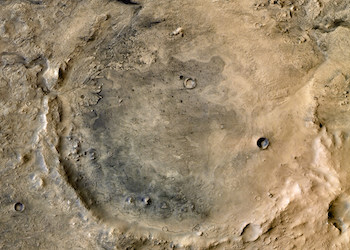
NASA’s Mars Rover Perseverance is close to landing on Mars after travelling nearly 4 million km. On Thursday, February 18, 2021, it will land on the surface of Mars, for which scientists of the US Space Agency are very excited. The correct landing of its rover will determine how further research will be done there. This is NASA’s fifth rover to land on Mars. The rover is scheduled to land at the Jezero crater at 3:55 pm (3:55 pm EST (12:55 pm PST Feb. 18, 2021), US local time.
According to NASA, the Jet Propulsion Lab scientist is keeping an eye on this and everything is fine at the moment. However, they believed that its landing would be more challenging than they had thought. NASA says that this is their most ambitious project so far. According to NASA scientist Thomas Zurbuchen, this rover will search for life on Mars.
Scientists believe that the place where this rover is about to land is a place where once a river flowed and there was a lake. Due to this delta was built here. There must have been life billions of years ago. But there are many rocks which are extremely steep and sand dunes in this crater. Therefore landing here is extremely difficult. So far, only 50 percent of landing attempts on Mars have been successful. The geographical structure here is quite complex. The team of Perseverance has learned a lot from their old practices and now technology is also supporting them. Today they can land this spacecraft successfully through technology.
The project’s deputy project manager, Jennifer Trosper, says the team is fully prepared and ready to land in its crater. However, they have also made it clear that there is no guarantee of successfully landing. But the team is leaving no stone unturned. It will start its work only after it lands safely.
The place of landing of this vehicle has been selected by scientists from all over the world. During this time, experts had selected 60 places for its landing on Mars. After analyzing all these for five years, this crater was chosen. Scientists believe that due to the presence of the lake and river formed here years ago, minerals can be present here. At the same time, there is a possibility of life in a very subtle form. This crater is about 45 meters wide and is located to the west of Isidis Planitia. Isidis planitia is believed to have been formed after a meteorite hit. This place is located at a distance of about 3700 km from Curiosity. Scientists believe that this may be the best place for life.
